COMMEMORATIVE BENCHES, SIGNS, PLAQUES, TREES AND OF THE
HIGHLANDS-BELLEVUE COMMUNITY
|
|
HIGHLANDS JUNIOR HIGH SCHOOL GARDEN
The scheme, from your report, went off like magic...any downside?
The only downside, like with any new and large undertaking, is the sense that you're Sisyphus standing at the bottom of the mountain. Unlike *Sisyphus, once the project started, it was incremental progress and manageable. Luckily, Cory--the instigator of how I would get involved was a big supporter with more than words. He was my back up for the indoor garden and came to the training, and he helped out by picking up the metal and wood for the boxes, and helping to build the garden. His dad was a big help too--Louis loaned us his skid steer which made much lighter work! I was really lucky that Brad was on board, and let me give it a shot.
You mention grade eight students, how many would that involve? Did they have to garden? There were 5 directly involved in the building days--they were a part of the garden club. It was their choice to be there. I was really proud of them. It was summer hot out during the May Saturday we placed the boxes, moved the soil and bark. They were melting, but their spirits were buoyed by hotdogs and plenty of water. They were really proud of themselves at the end of it. T
When I was in the army we had a name for those who did not pull their fair weight...'skivers'...did you have any... their 'treatment'? Some students in the horticulture class certainly didn't enjoy weeding--weeding is a necessary, but not glamourous part of gardening. They were responsible to one another--once I taught one student how to fill the water barrels (among other tasks), their job was to mentor their peers. There were even students not a part of horticulture who needed garden time. If a student was particularly naughty in class, I gave them a no refusal invitation to work with me in the garden over the lunch hour. They always showed up, worked hard, and were smiling when they left. They'd made reparation and done something good for themselves and their school--and our plants.
Did you ask for [or need] parent involvement... No. Those who chose involvement had stopped by our Open House and were excited by seeing the garden club helping prospective students plant beans. Brad did a great job of promoting the gardens through parent council and in the media, so it was through word of mouth. Summer help is the hardest part--a program needs some adults and responsible students ready to keep it growing. Someone must have watered and cared for the garden during 'no school' periods? Yes, the first summer it was me and a student who took turns coming by to water it. The second summer, before I was off to Centre High, I continued to help early in the summer and our amazing custodians and Leslie took care of the garden for the remainder of the summer.
Have you any photos from your involvement? I am trying to rustle some up from past emails. I'll send some along when I unearth them.
Any thing you would have done differently? Hmmm, I'm a seat of my pants, learn as I go kinda person. I know enough to get going and learn along the way. If I was to do something like this again, I'd do much of it the same way, but I'd go in knowing more about plant science. . . pollinators . . . I'd definitely build a stronger program. I tried and tried to get us access to a local aquaponics company and into some of our local growers, but their concern was that spring was their busy season and their technology is proprietary. I'd push harder to develop a partnership with a local grower and with the City of Edmonton, and with the U of A farms. Placing our garden in a larger context and offering students more work ready pathways would be amazing. Urban kids don't realize all the occupations in plant science. Also, I'd get more funding to develop a water capture system for rainwater; the 5 barrel system we had was rather cumbersome. We attached a garden hose to the staff room sink and that was slow and inefficient . . . not to mention the time I flooded the staff room. . . it got mopped up, thanks to Cory for his help, and nobody was the wiser come Monday morning. But, all things considered, any program takes at least 3 years to really get going, so I think we did alright in two years.
You are not identified in the article...may I and how? Sure--Josh Chartrand, my husband and instigator is Cory Chartrand.
And, last but not least, tell me what answers I cannot use! Use whatever you like.
*boulder pushing was never my favourite sport...almost a tough a job as Atlas's'.
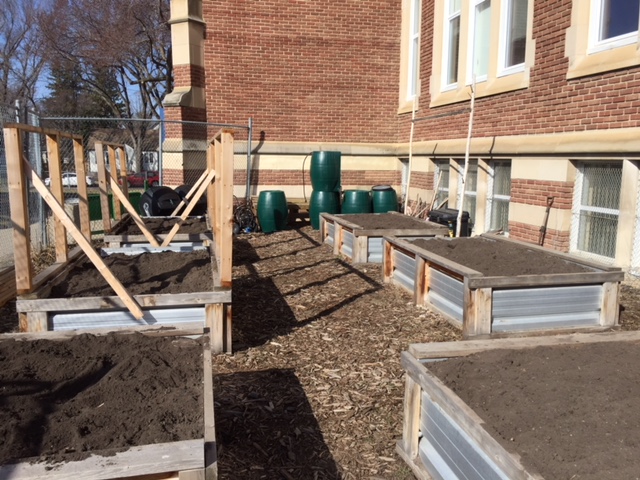 July 2018: The following pictures were taken at the end of June. Even though you must peer through mesh, you can see that the boxes have been Apparently, now that school is out, the care of the gardens will full under the tender loving care of volunteer parents. More pictures will be taken throughout the summer and hopefully one showing the harvest about to be gathered.
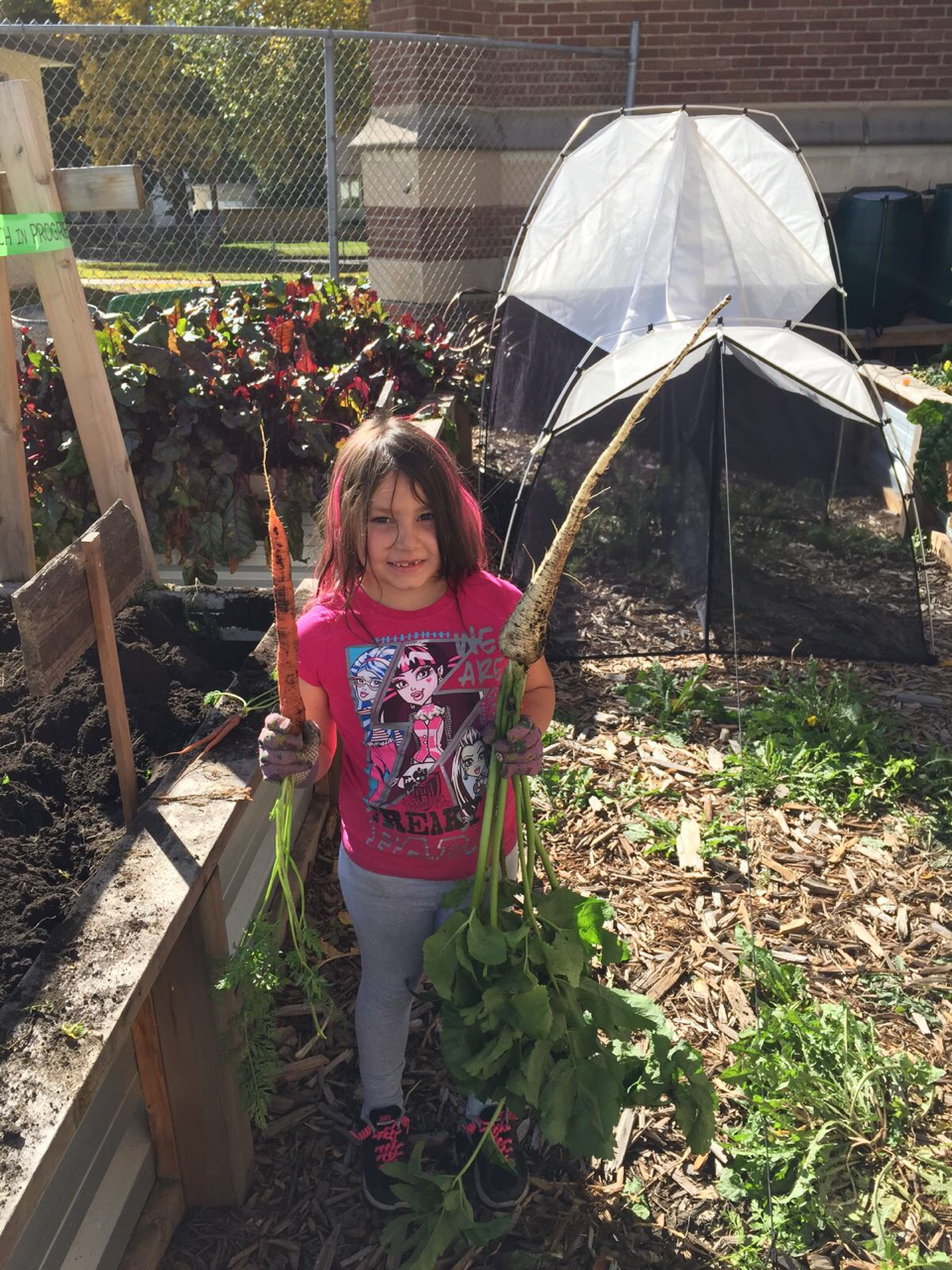 July 2018 July 2018
Hello John
Here is my long awaited response! I have finally caught up with my life enough to take a minute to send you my part in the garden.
I took over the garden when I started teaching at Highlands in September 2016. Gardening has always been a passion of mine and I was very excited to be given the chance to share that with my students. Every spring I teach a Horticulture option where I get to work with a very eager class of students from grade 7-9. We spend 3 mornings a week prepping
 and planting the garden. It is wonderful to see young people interested in growing vegetables and wanting to learn how to garden. Much of our harvest goes to the hot lunch program where we have an amazing chef that makes delicious, healthy, veggie packed meals for our students every day. Again this year we had Phil from Earth Apples bring us a v and planting the garden. It is wonderful to see young people interested in growing vegetables and wanting to learn how to garden. Much of our harvest goes to the hot lunch program where we have an amazing chef that makes delicious, healthy, veggie packed meals for our students every day. Again this year we had Phil from Earth Apples bring us a v ariety of seed potatoes for our garden. His product is available at garden centres. ariety of seed potatoes for our garden. His product is available at garden centres.I'm not sure what else you would like to know but please feel free to send me any questions that you might have. I have attached some photos. The girl holding the giant carrot and turnip is my daughter Emilia (my family helps me care for the garden in the summer). There is also picture of Phil and his product [only his product showed up]. I will take more photos this week as the garden has really exploded in the last couple of weeks.
Thanks!
Barb Vezina
Teacher
Highlands School
780-470-4206
|
|
July 28, 2018: Teacher Barb provides a garden update: The garden is growing beautifully and all the rain we have been having lately has been a big help. We have started a new program within the garden called Generation Nutrition. This program is sponsored through the international organization "Action Against Hunger" and is funded through the TD Foundation. Karine from their Toronto office brought us 30 planting boxes and worked with the Highlands daycare children to teach them how to plant the boxes and care for the new seedlings. The daycare children had so much fun and are taking great care of the boxes. In the fall, children from the nearby elementary schools and Highlands junior high students will have the opportunity to harvest the vegetables and work with a chef to prepare a healthy meal.
|
|||
| PICTURES TAKEN MID TO EARLY AUGUST 2018 | |||
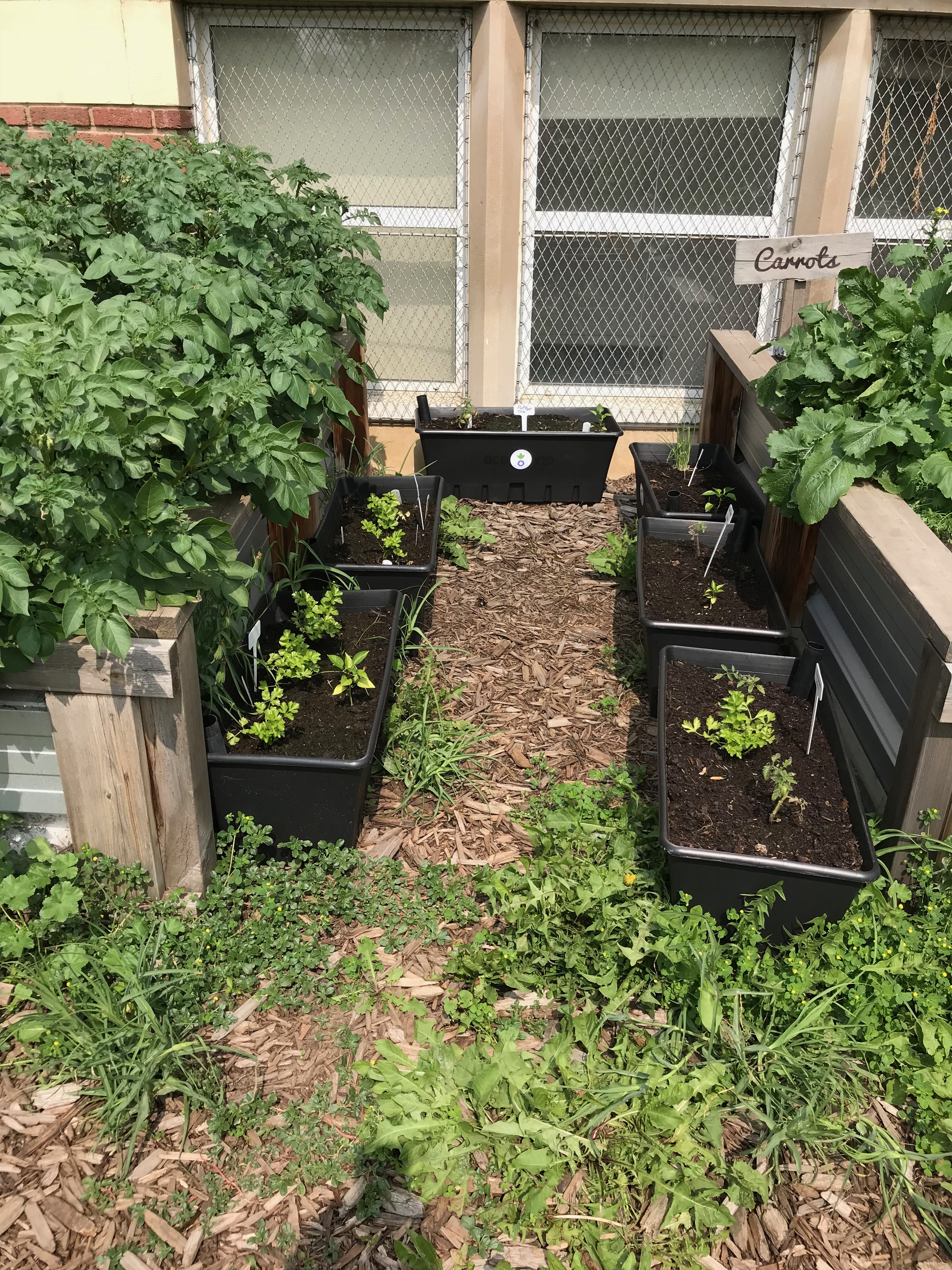 |
 |
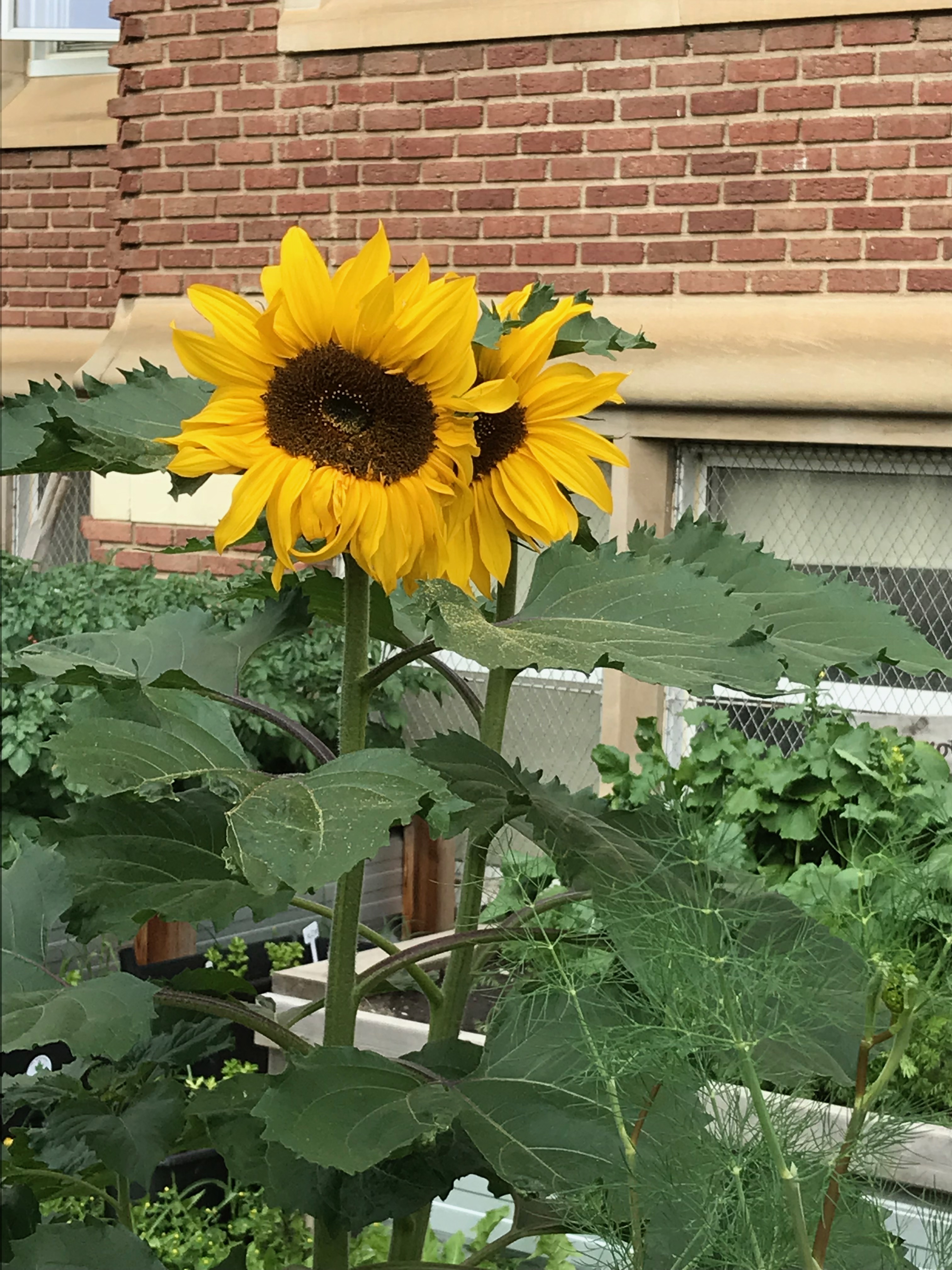 |
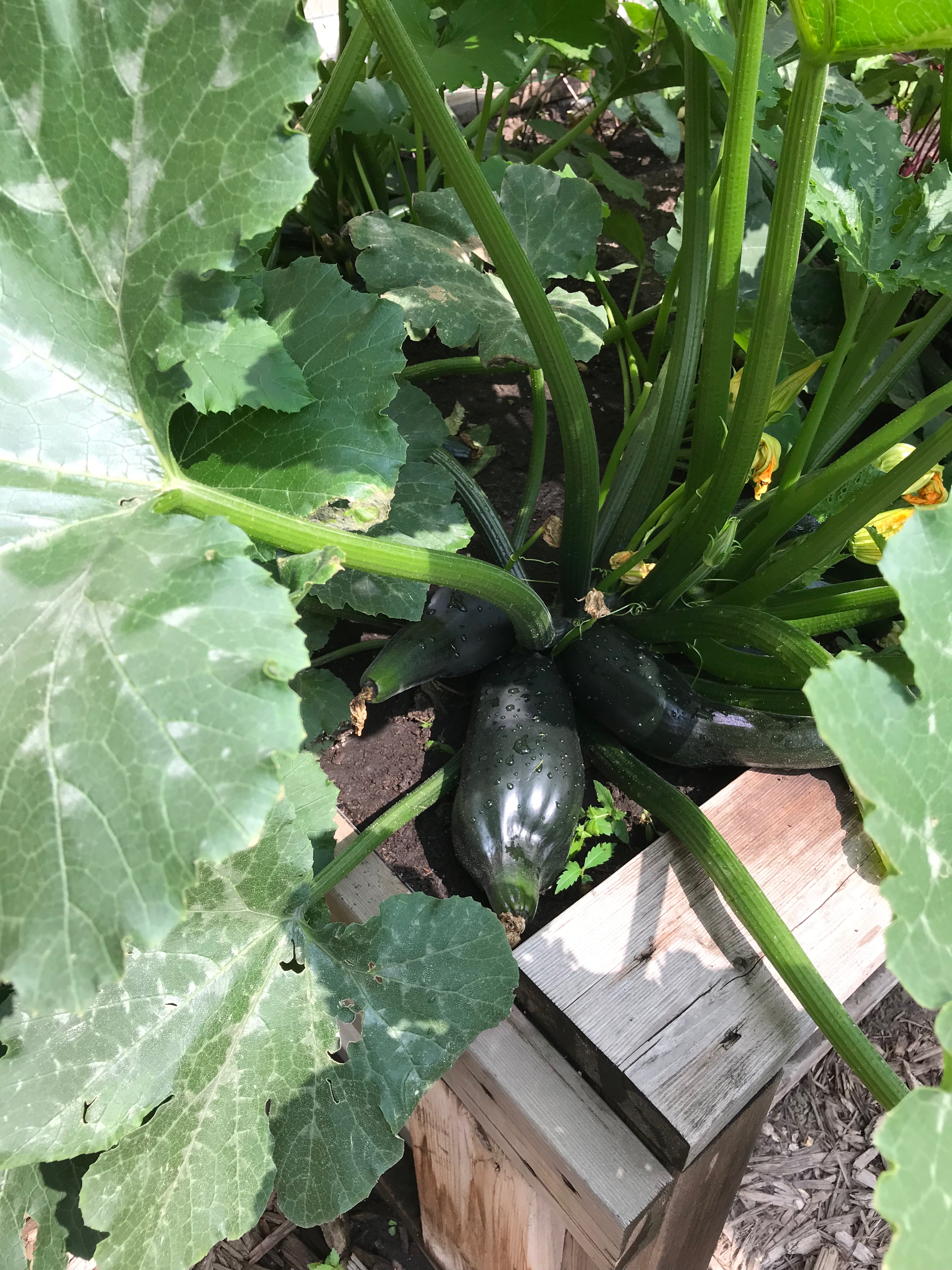 |
| The new planting boxes described by Barb | Potatoes without number... | Sunflowers..the birds will be delighted....! | One of those vegetables where mother would say...'eat up or no dessert' |
|
There have been lots of changes at Highlands with two years of construction and welcoming the elementary students last year. When everyone was sent home in March of 2020 due to COVID, I thought that the gadren would go unplanted but many staff members stepped up to help me. The students returned to school in the fall and they were excited to harvest and enjoy the produce. The following summer was hot and dry, this brought new struggles with frequent watering and knee high weeds. To try to control the weeds between the beds, my husband and I hauled and laid 100 bags of wood chips! Last spring I had a very eager group of grade 8s in my horticultural class and we spent many hours in the garden working in compost and new planting. The students also got the opportunity too teach a g.rogiftup of grade 4s how to plant seeds and help them to plant some Marigold seedlings [which we started indoors] as a Mother's Day gift. We no longer have a hot lunch program at the school so the produce is now going home with students, with recipes to try with their families I am looking forward to the spring and a new group of students to share the joys of garden with. Barb. Vezina |
 planted and in some case are showing signs of growth.
planted and in some case are showing signs of growth. January 2023 For me, rthe school garden has been a labour of love for many years.
January 2023 For me, rthe school garden has been a labour of love for many years.